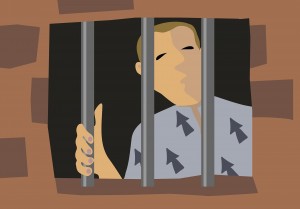DOC (Direct your Own Care) is a framework that breaks down chronic pain into basic parts that will enable you to discover your own solution. It evolved from my own 15-year experience suffering from chronic pain with the last seven being extreme. I was fortunate to work my way back to a rich and full life. Helping my patients find their own way out of chronic pain has been an incredibly enjoyable and rewarding phase of my career.
There are three parts to solving your pain:
- The first is to understand chronic pain. It is a neurological problem that is different than acute pain.
- Second, all the variables relevant to your situation must be addressed simultaneously.
- Finally, every successful patient has taken control of his or her own care.
Pain impulses begin with stimulation of pain receptors and are sent to the brain through peripheral nerves and the spinal cord. In the brain a substance called myelin is laid down with repetition that etches in these pain circuits. Myelin can roughly be compared to the insulation around an electric wire that improves the speed of conduction. The process is similar to an athlete, artist or musician learning a skill. However the frequency of chronic pain impulses is more like a machine gun. Pain circuits become deeply embedded in the nervous system within six to twelve months. Similar to knowing how to ride a bicycle they are permanent.

Pain signals danger, which creates anxiety. Your body secretes adrenaline, cortisol and other stress chemicals, which protects you by increasing your heart rate and increasing the blood flow to your muscles. It also shuts down the blood supply to the frontal lobe of your brain (your thinking center) and amplifies the sensation of pain. Every millisecond of your life has evolved around avoiding anxiety. It is the only reason the human organism has survived. Your bodily responses to the environment are not centered on having a great time. Anxiety, Anger, and Adrenaline
Trapped by Pain
When you continue to be trapped by pain (or any life circumstance) you will become frustrated and angry. Anger results from loss of control. Any time you cannot fulfill a basic need such as air, food, or water you will become anxious then angry. Not being in pain is a basic need. Maslow’s miss Anger stimulates the body’s physiological response to meet that need. Therefore anger is anxiety with a chemical kick. Now the adrenaline levels really are elevated, which does improve your chances of solving a given problem. But it destroys the quality of your life, especially your close relationships. A terrible vicious cycle ensues – more pain, more adrenaline, more pain, and so on. Where and how does it stop? For most people it does not and it consumes them and everything around them. It is the worst part of the human experience. Your Hand Stuck Over the Stove

Anxiety is a neurophysiological response to a threat. It’s a mental reflex that sets off an automatic protective response. So similar to pain circuits anxiety pathways are also permanently etched in and become stronger with repetition. That is why every human experiences increasing anxiety with age. If they don’t, then their body will adversely respond with other physical responses. There are over 30 different symptoms that may occur. There are no exceptions. It is just a matter of degree, type of manifestations and coping skills.
As chronic pain always creates anxiety and frustration they are neurologically linked. Neuroscientists have a saying, “Neurons that fire together, wire together.”
It sounds like a dismal situation and it is if you approach the problem with traditional methods. Trying to deal with irrational pathways with rational means cannot work. The unconscious brain is a more than a million time stronger than the conscious brain. The more attention that is paid to what I call “The Terrifying Triad” of pain, anxiety, and anger the stronger they will become. If you try to ignore them then it becomes even worse. The more you try not to think about something you will think about it more. So what is the solution? White bears
It has been recently discovered that the brain has a tremendous capacity to change at any age. The descriptive term is “neuroplasticity.” We do know that in chronic pain peoples’ brains physically shrink. Fortunately it re-expands with resolution of the pain. It is possible by using simple tools to both shift off these pathways onto non-painful circuits and to stimulate the formation of new pathways. Although there are many ways of accomplishing this I am presenting the starting point, which has been the foundation for essentially every patient I have seen successfully become pain free.
Stimulating Brain Change – Awareness, Separation, Reprogramming
There are three steps to shifting and creating alternate brain pathways.
- You must first become aware of your automatic response to a given stress. It will always be a rapid protective response.
- Stress by definition is always a threat – otherwise it wouldn’t be stress.
- Then you must create a space, or separate, in order for you to substitute a more appropriate or functional reaction.
- Reprogramming is the final step.
Awareness and Detachment – Expressive Writing
Humans have a problem in that unpleasant thoughts create the same response as a physical threat but you can’t escape from them. They key is to simple separate from them. I have discovered the easiest and most effective way of developing an awareness of my response to stress is to simply write down my negative or positive thoughts and destroy them. It has been shown in over 300 research papers that this is an effective way of changing the body’s response to stress. Stress isn’t the main problem. It’s your response to it.
There are two reasons to tear up, shred, or burn your writing. It’s not to get rid of the thoughts. They’re permanently embedded. The first is so you can write with complete freedom. Any thoughts, positive or negative will do. Write and Don’t Stop The more important reason it to not spend any time or energy analyzing them. Your attention will be focused in that direction and you’ll be reinforcing them. You might as well place your hand into a hornet’s nest.
In my opinion the writing accomplishes several things.
- It creates an awareness that these random thoughts are in your nervous system and that they are just thoughts.
- As the paper is a physical distance from you it allows you to separate from these thoughts. It is easier to see that they are just thoughts and have nothing to do with your reality.
- This space is connected with vision and feel, which connects with the unconscious.
- As you are connecting a thought with a physical sensation, you are creating new pathways.
Expressive writing creates awareness and separation with one exercise. It is simple and concrete – and doable. It was the first treatment that was helpful for me after trying to solve my chronic pain for over 15 years. I was lucky to have discovered it, as I was nearing the end of what I could tolerate. Video: Write Your Way Out of Chronic Pain
Warning: Please note that many people may experience an early decrease in mood and sense of well-being. Pain may also initially increase. This is not a bad prognosis for a long-term beneficial effect. It is recommended that you limit the writing to about 20 minutes per time until you are feeling better. If you feel too uncomfortable stop the writing immediately and contact your physician or mental health professional. The Dangers of Positive Thinking

Reprogramming
Reprogramming can be accomplished in thousands of ways such as music, hobbies, talking to friends, acupuncture, etc. However there is one core method that I feel is basic to the reprogramming process. I call it “active meditation”. It is more often referred to as mindfulness. It is simply placing your attention on sensations. Any one will do – taste, feel, sound, pressure, etc. There are three steps and it just takes five to ten seconds per time. (1)
- The first step is to relax
- Let yourself stabilize
- Finally, place your attention on any sensation. Taste your food. Feel the breeze. Listen to sounds.
I feel the active meditation accomplishes several things. As you relax your body will begin to secrete less adrenaline. By placing your attention on a given sensation your nervous system is no longer on the pain pathways. You have shifted off of them and are now truly in the present moment. As you continue to do this throughout the day it becomes more and more automatic. Eventually as you use the pain pathways less they will become weaker and the other pathways will become stronger.
One metaphor that comes to mind is that of diverting a large river into another channel. There is very little water that will initially flow through the new riverbed but with continued excavation there will be more and more flow. Eventually just the force of the water will create a new river. The old riverbed is still there. (It is permanent) but is much less developed. As you use your pain pathways less and the new pathways more, at some tipping point you will go to pain free.
Begin the writing/ active meditation NOW
The DOC project addresses the other factors that affect your pain experience. But the expressive writing/ active meditation is the core starting point. I ask all of my patients to begin that evening. I suggest that they write once or twice a day for at least 10 to 15 minutes. The active meditation should be done as many times as you happen to think about it. I am guessing that I do it 20 – 30 times a day. It eventually becomes an unconscious habit.
As nothing really changes until the writing/ active meditation begins I ask my patients to begin these exercises before they do much reading. I can instantly tell on the second visit whether they have started the expressive writing. People notice changes in their mood quickly although the pain may not have resolved. The research does show that most people will experience an initial dip in their mood and sometimes increased pain for a few days or weeks. Then I know they are actually writing.
Expressive writing/ active meditation alone is not the solution to your pain any more than reading my book. But these exercises are incredibly powerful especially considering how simple they are. BTW, what is the downside? How high are the stakes? Do you really want to continue to live like this? Was this your high school dream? You have once chance at this life. Take it!!

1) Learned from a workshop put on by Alan Wallace, PhD
